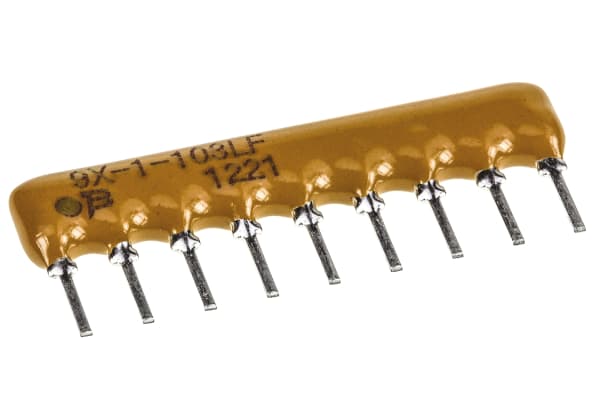- Published 7 Dec 2023
- Last Modified 18 Feb 2025
- 5 min
A Complete Guide to Aluminium Electrolytic Capacitors
Discover the power of aluminium electrolytic capacitors with our essential guide, highlighting their vital role in electronics.

Aluminium electrolytic capacitors are essential components in electronic circuits, providing high capacitance and dependable performance. It is crucial to choose the correct capacitor to ensure optimal functionality and longevity of electronic devices. Mismatched or low-quality capacitors can lead to unstable voltage levels, increased power consumption, and potential circuit failure. By selecting the right aluminium electrolytic capacitor, you can enhance efficiency, reliability, and lifespan while avoiding potential risks and performance issues.
What is an Electrolytic Capacitor?
An electrolytic capacitor is a type of capacitor that uses an electrolyte as one of its key components. It consists of two conductive plates, called electrodes, which are separated by a dielectric material and immersed in an electrolyte. The two most common types of electrolytic capacitors are aluminium electrolytic capacitors and tantalum electrolytic capacitors.
If you need help on how to convert farads please see the Capacitor Value Conversion Chart.
What is an Aluminium Electrolytic Capacitor used for?
Aluminium Electrolytic Capacitors are mainly used in applications such as Energy Storage, Capacitance, Filtering and Smoothing, Decoupling, Timing and Phase Shifting, Power Factor Correction (PFC), and Voltage Blocking.
Types of Aluminium Capacitors
Aluminium Electrolytic Capacitor
Aluminium Electrolytic Capacitors: These are the most common type of aluminium capacitors. They use an aluminium electrode with a thin oxide layer as the dielectric and a liquid or gel electrolyte. Aluminium electrolytic capacitors have high capacitance values and are widely used for power supply filtering, energy storage, decoupling, and other applications.
Polymer Electrolytic Capacitor
Solid Aluminium Electrolytic Capacitors: Also known as Polymer Aluminium Electrolytic Capacitors, use a conductive polymer as the electrolyte instead of a liquid or gel. This type of capacitor offers advantages such as lower equivalent series resistance (ESR), longer lifespan, and improved high-frequency performance compared to traditional aluminium electrolytic capacitors.
Hybrid Electrolytic Capacitor
Hybrid Aluminium Electrolytic Capacitors: Combine the features of aluminium electrolytic capacitors and solid aluminium electrolytic capacitors. They have an aluminium electrode and a solid electrolyte, typically a conductive polymer or a combination of polymer and liquid electrolyte. Hybrid capacitors offer a balance between the high capacitance of aluminium electrolytic capacitors and the improved performance and reliability of solid aluminium electrolytic capacitors.
Capacitor Value Conversion Chart
To convert between capacitance units, remember that each unit is a multiple or fraction of the other. For example:
- 1 μF = 1000 nF
- 1 nF = 1000 pF
To convert 100 nF to other units:
- To μF, divide by 1000 (100 nF ÷ 1000 = 0.1 μF)
- To pF, multiply by 1000 (100 nF × 1000 = 100,000 pF)
- To mF, divide by 1,000,000 (100 nF ÷ 1,000,000 = 0.0001 mF)
In summary, 100 nF is equal to 0.1 μF, 100,000 pF, and 0.0001 mF. Remember to consider the unit relationships for accurate conversion.
Farads (F) | Millifarads (mF) | Microfarads (μF) | Nanofarads (nF) | Picofarads (pF) |
|---|---|---|---|---|
| 0.000000001 F | 0.000001 mF | 0.001 μF | 1 nF | 1,000 pF |
| 0.00000001 F | 0.00001 mF | 0.01 μF | 10 nF | 10,000 pF |
| 0.0000001 F | 0.0001 mF | 0.1 μF | 100 nF | 100,000 pF |
| 0.000001 F | 0.001 mF | 1 μF | 1,000 nF | 1,000,000 pF |
| 0.00001 F | 0.01 mF | 10 μF | 10,000 nF | 10,000,000 pF |
| 0.0001 F | 0.1 mF | 100 μF | 100,000 nF | 100,000,000 pF |
| 0.001 F | 1 mF | 1000 μF | 1,000,000 nF | 1,000,000,000 pF |
In Summary
Aluminium Electrolytic Capacitors and Aluminium Polymer Capacitors are two common types of capacitors used in electronic circuits. While both capacitors serve similar functions, they differ in terms of their construction, performance characteristics, and applications.
Aluminium Electrolytic Capacitors are cost-effective and offer high capacitance but have a limited lifespan and larger size. Whereas Aluminium Polymer Capacitors provide lower ESR, longer lifespan, and smaller form factor, they are more expensive and can have lower voltage ratings. The choice between the two depends on the specific requirements of the application, considering factors such as cost, size, lifespan, and performance characteristics.
Featured Suppliers
Related Articles
Related links
- Aluminium Capacitors
- A Complete Guide to Aluminium Sheets
- Nichicon 100μF Conductive Polymer Hybrid Aluminium Electrolytic Capacitor 50V dc, Surface Mount - GYC1H101MCQ1GS
- Panasonic 100μF Conductive Polymer Hybrid Aluminium Electrolytic Capacitor 35V dc, Surface Mount - EEHZF1V101V
- Panasonic 100μF Conductive Polymer Hybrid Aluminium Electrolytic Capacitor 50V dc, Surface Mount - EEHZF1V101V
- Panasonic 270μF Hybrid Surface Mount - EEHZK1E271V
- Nichicon 150μF Conductive Polymer Hybrid Aluminium Electrolytic Capacitor 25V dc, Surface Mount - GYD1E151MCQ1GS
- Panasonic 56μF Conductive Polymer Hybrid Aluminium Electrolytic Capacitor 50V dc, Surface Mount - EEHZF1H560P


